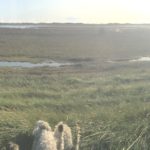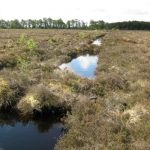World Wetlands Day occurs annually on February 2nd, marking the…
Celebrate World Wetlands Day – Thursday 2 February 2023
Wetlands are critically important ecosystems that contribute to biodiversity, climate mitigation and adaptation, freshwater availability, and more. World Wetlands Day, celebrated every year on 2 February, aims to raise global awareness about the vital role of wetlands for people and planet. This day also marks the date of the adoption of the Convention on Wetlands on 2 February 1971, in the Iranian city of Ramsar.
Ireland’s wetland habitats range from the very small (like a freshwater spring) to habitats which dominate the Irish landscape such as lakes, rivers and bogs. They are home to a large diversity of plant and animal species and form an important network of ecological sites for many species when they are migrating. Wetlands are important ecosystems that provide numerous benefits, including water purification, habitat for wildlife, and protection against floods and erosion.
World Wetlands Day provides an opportunity for us to reflect on the important role that wetlands play in our environment and the steps we can take to protect them. In the Republic of Ireland, wetlands are an essential part of the country’s natural heritage and are crucial local ecosystems. By working to conserve these important ecosystems, we can ensure that future generations will be able to enjoy their many benefits.
Find a World Wetlands Day 2023 event near you
The Irish Ramsar Wetlands Committee (IRWC) has a list of events taking place to celebrate World Wetlands Day.
You can learn more about Irish wetlands on their website www.irishwetlands.ie
Irish Wetlands Video Series
This series of videos was produced in 2021 by the IRWC with support from the OPW, the EPA and NPWS to celebrate 50 years since the signing of the Ramsar Convention. The Ramsar Convention on Wetlands of International Importance Especially as Waterfowl Habitat is an international treaty for the conservation and sustainable use of Ramsar sites (wetlands). It is named after the city of Ramsar in Iran, where the convention was signed in 1971.







